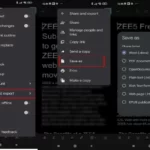How to Interpret and Use an Amortization Schedule?
A vehicle amortization schedule is a valuable tool for managing car loans and understanding the financial side of car ownership. It shows how much of each payment goes towards paying down the loan principal and what portion the interest is. This article provides a comprehensive guide to assist you understand and make the most of your vehicle amortization schedule.
What is a Vehicle Amortization Schedule?
An amortization schedule is a table that shows the loan balance, interest, and principal payment for each payment period of a car loan. It clearly shows how much you’re paying towards the loan’s interest and how much is reducing the loan balance. This schedule makes it easy to see how long it will take to pay off the loan and how much interest you’ll pay over the life of the loan.
How to Read an Amortization Schedule?
Reading an amortization schedule is straightforward. The schedule starts with the loan balance, interest rate, and term and then breaks down the payments into a table that shows the loan balance, interest payment, principal payment, and total payment for each payment period.
The loan balance column shows the outstanding balance on loan after each payment. The interest payment column shows how much of each payment goes toward paying interest, while the principal payment column shows how much goes toward paying down the loan balance. Finally, the total payment column shows the total amount paid in that payment period.
Benefits of an Amortization Schedule
An amortization schedule can provide several benefits to car owners:
- Better Budgeting: By clearly showing how much of each payment is going towards the loan balance and how much the interest is, car owners can budget their finances more effectively.
- Loan Payoff Tracking: The amortization schedule provides a clear timeline for how long it will take to pay off the loan, making it easier to plan and track progress.
- Interest Cost Awareness: The schedule clearly shows how much interest you’ll pay over the span of the loan, which can help you make informed decisions about loan terms and rates.
“When a loan follows an amortization schedule, the payments are divided between the principal owed and the finance charges,” explains Lantern by SoFi experts.
Understanding Loan Terms
An amortization schedule is closely tied to the terms of your loan. The loan term is the duration it will take to pay off the loan, and the interest rate determines what you’ll pay in interest. Understanding these terms is key to making the most of your amortization schedule.
For example, a longer loan term means lower monthly payments but more interest paid over the life of the loan. A lower interest rate will reduce the amount of interest you pay but may also result in higher monthly payments.
Tips for Managing Your Amortization Schedule
Here are a few tips for managing your amortization schedule:
- Make extra payments: Extra payments can help you pay off your loan sooner and reduce the interest you pay over the life of the loan.
- Refinance: If you find a better interest rate, consider refinancing your loan to save money on interest.
- Avoid late payments: Late payments can result in additional fees and can negatively impact your credit score, so it’s important to stay on top of your payments.
An amortization schedule is a valuable tool for car owners, providing a clear picture of how much each payment goes toward the loan balance and how much the interest is. By understanding the loan terms and using the schedule to manage your finances, you can make the most of your car loan and stay on top of your payments.







